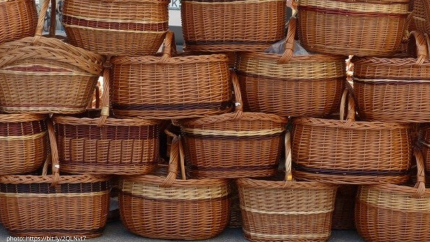Wickery traditions from Podkarpackie Region
Rudnik nad Sanem is a unique city in the Podkarpackie Voivodeship. wicker has been playing a very important role here for years. Weaving secrets are passed on in family homes, where basketry is an additional source of income. For the city, wicker is a flagship product and a worldwide brand.

The proverbial Galician poverty resulted in an industry that made Rudnik famous and the international center of wickerwork. Today, not only intricately woven baskets or furniture amaze buyers. In recent years, Rudnik wickerwork have even weaved the facades of large projects and world buildings. The wicker traditions of this city date back to the mid-nineteenth century, when these areas belonged to the Austrian Partition. There was considerable poverty at that time. The owner of the estate - Count Ferdynand Hompesch - noticed that wicker grows on the banks of the San River. So he sent five young men to Vienna to a basketball school to learn how to weave. When they returned, they taught others, and so began the production of wickerwork in this area. A special variety of wicker was imported from the United States, which had better elastic properties. This variety was called American and is still grown today. rods for weaving wickerwork. Nearly 150 years of tradition of weaving a wide range of wicker products had their years of prosperity, but also difficult periods. After World War II, two large wicker plants were created here, producing a standard range of products. The greatest glory years of wickerwork fell in the 70s and 80s of the last century.

Every year May is a special month for the promotion of the city and wicker. For the whole weekend Rudnik turns into a center of basketball art. - Wicker festival is organized. It is also a chance to present basketry not only as a craft, but also as an emerging art. During a wicker holiday, you can not only see how real wicker miracles arise, but even participate in a wicker fashion show. It is also an opportunity to present many local folk artists, creating in nothing else but wicker gold from Rudnik.
